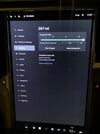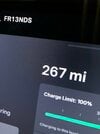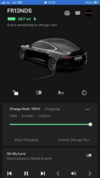I have a January 2016 Model S 70D and I’ve owned it since August 2020 (second hand with 29500 miles). It originally charged to 276 miles (100%) and today 5 Feb 2024 it still charges to 267 miles (100% with 95,000 miles). It has lost 9 miles of ultimate range in 3 and a half years. I’m reading others saying their same age and model is only charging to 214 miles (100%). Am I just lucky?? I supercharge 95% of the time and 5% at home.
-
Want to remove ads? Register an account and login to see fewer ads, and become a Supporting Member to remove almost all ads.
70D 2015/16 range on original battery
- Thread starter FR13NDS1
- Start date
-
- Tags
- 70d battery 70d Model S Range
Similar threads
- Question
- Poll





